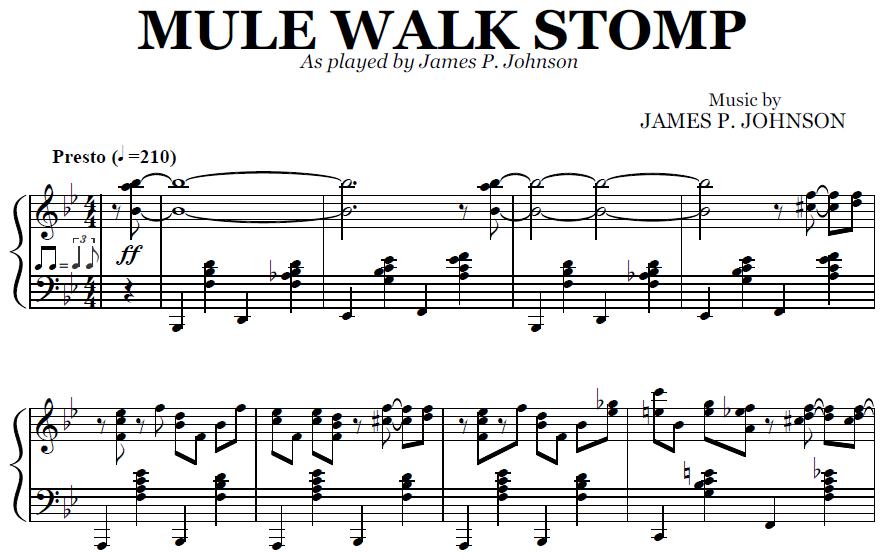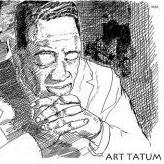-
Posts
12,215 -
Joined
-
Last visited
-
Donations
0.00 USD
Content Type
Profiles
Forums
Events
Blogs
Everything posted by EKE BBB
-
How could you avoid falling on love with her....?
-
I really dig her! She may not have the most powerful soprano/contralto voice, but hers is a warm, charming, velvet-like voice. I enjoy when she whispers more than sings... Favorite recordings? Mine are, first of all, the Clifford Brown date (her voice melts perfectly with Clifford´s trumpet tone and Jimmy Jones or Hank Jones piano) and the Gil Evans date. I have these two in a single cd included in a Verve collection released in Spain a few years ago. Hearing her singing "Falling in love with love" or "Don´t explain" makes me shiver! And then there are discs such as "The feeling is mutual" (Milestone, 1967), "Chasin´ the bird" (Inner city, 1979) or "A Shade of difference" (Milestone, 1968) that I got in some cheap Gitanes releases. I like her even in such unusual recording as "Carrousel" (Finlandia Recordings, 1996) with Finish musicians and arrangements and some compositions by conductor Torrie Zito; or "Jelena Milcetic a.k.a. Helen Merrill" (Gitanes, 1999), a really strange disc indeed!
-
And "fussion banjo" too! Béla Fleck
-
No, I don´t have the Bix, Tram and Tea Mosaic. It was in my wish-list, but when I picked those Sunbeam sets, I forgot about it... ...as far as I remember (Mosaic website is down right now) they included some sides without Bix that I don´t have (my Trumbauer without Bix is very, very, very short) ...if it´s so, I´ll put it there again!
-
TWO here! ...but still I don´t understand what metrosexual means!
-
Lon: Your knowledgeable posts are always wellcome, wherever you put them! B) What´s the Sunbeam upcoming release you mention? And regarding Bix influence... I gues we will hear PDEE again discussing it! And PDEE can be so persuasive!
-
Thanks for the info, FrancoisD Somewhere (think it was Alyn Shipton´s "A new history of jazz") I read something about his influence on the early "proto-bop" piano playing, as you mention. That´s why I was surprised when I look for him in my jazz collection and found he was always in a "mainstream" context. He´s featured a lot in the JATP set (with Bird, Hawk, Prez, Jacquet, Flip Phillips...). And at least in three sets he´s leading a piano trio: -With Al McKibbon and JC Heard "Boogie woogie call rag" -With Slam Stewart (well, who´s the leader here?) "My blue heaven" and "Play fiddle play" -With Benny Fonville and Buddy Rich "Boogie woogie call rag" again and "Sweet Lorraine"
-
Kenny Kersey, Café Society (Downtown), New York, June 1947]
-
Photograph of the Rhythm Jugglers taken on January 26, 1925 in the Gennett Recording Studios in Richmond, Indiana. From left to right: Howdy Quicksell, Tommy Gargano, Paul Mertz, Don Murray, Bix Beiderbecke, Tommy Dorsey.
-
I made a search and didn´t find any specific thread on BIX. One of the most appreciated treasures in my collection are the Sunbeam four box-sets (3CD each) "Bix Restored" with their marvellous sound (JRT Davis remastering). I had some Columbia releases (Bix and his Gang, Goldkette orchestra, Trumbauer Orchestra and even some Paul Whiteman), a King Jazz CD with all his Wolverines output, and a couple of mixed compilations, but these box-sets are caviar for me! You can hear the sound of his cornet like never before! I like his phrasing, his emotional quality, his unexpected notes... but what I´ve always loved is his sound, his full, "rounded" and "golden" chime-like tone. Some scholars and Bix´s friends ascribed his tone to his frequent use of the horn´s third valve, not an orthodox technique among schooled brass playerss in that era. This was highly refuted in an AAJ thread. Many Bixophiles have tried to describe his tone: Eddie condon said it was "like a girl saying yes" and Ralph Berton described his tone and beautifully clean articulation as "like shooting bullets at a bell". Again: put your thoughts on BIX here.
-
I know this guy´s playing from Billie´s recordings and from JATP and I dig him! As far as I know, Ken Kersey recorded just a dozen titles as a leader, four for Savoy (1946), two for Clef (1949), two for Circle (1950) and four for Foxy (1951). Is there any release with all these dates? An AMG search brings me only one record "Ken Kersey" (Savoy, 1954) and no review. Any additional comment on this player will be appreciated. EDIT: Sorry for duplicating this thread. I don´t know how to delete this topic!
-
I know this guy´s playing from Billie´s recordings and from JATP and I dig him! As far as I know, Ken Kersey recorded just a dozen titles as a leader, four for Savoy (1946), two for Clef (1949), two for Circle (1950) and four for Foxy (1951). Is there any release with all these dates? An AMG search brings me only one record "Ken Kersey" (Savoy, 1954) and no review. Any additional comment on this player will be appreciated!!!
-
DEFINITIVEly, those sentences were written in Portuguese! ....but who knows?
-
I finally got the Complete JATP on Verve 1944-49. Wonderful! Hundreds of hours of pleasant listening are a-waiting!
-
Great to see this board´s back without any damage (as far as I can see).... regretfully, it wasn´t the same for AAJ!
-
Tete with Horacio Fumero and Peer Wyboris
-
I think no one´s mentioned "The wonderful world of jazz" by John Lewis. There´s some great Dolphy there, IMO! ....alongside other great musicians such as Paul Gonsalves, Benny Golson, Jimmy Giuffre or Jim Hall!
-
IMO, the total guitar master! I´ve been listening to a few records of my own during the last years ("Souvenirs" - a good Decca compilation with material from 1938 to 1946 - and "Peche a la mouche vol.1" (Verve, 1947) & "Peche a la mouche vol.2" (Verve 1947-53)). Wonderful music, that Quintet of the Hot Club of France really swang! And I recently bought this.... and was totally and definitely captivated! Guess there will be hundreds of hours for listening it! Another Django fans out there?
-
Tete Montoliú: "Tootie´s tempo" (Steeplechase, 1976)
-
Ferdinand Povel, Tete Montoliu, Albert "Tootie" Heath, Henk Haverhoek
-
Six years since he left us at age 64 due to lung cancer, I thought he deserved a thread of his own. One of the most underrated pianists, due to his nationality: in the 60s, jazz in Spain was very, very marginalized! Very gifted musician, with astonishing technical skills and a very bluesy approach. Born in Barcelona, 1933, his father was a musician on the Liceo Orchestra and on Barcelona Municipal Orchestra. Though his father tried to orient him to classical music, his mother had a huge collection of jazz recordings... and a mother is always a mother! Early he was in jam-sessions at Hot Club, leading Be-Bop quartet, sharing sessions with Don Byas, but it was his recording with Lionel Hampton in 1956 that brought him to the surface. In 1961 he was called to join the European All Stars troupe. He got wider recognition during his stance in Copenhague, when he played and recorded with Dorham, Shepp, Webster, Golson, Grappelli, Kirk and Dexter Gordon. In that period he alternated Berlin and New York with Madrid (at the Whisky Jazz Club) and Barcelona (Jamboree), where he formed his first stable trio with Eric Peter and Billy Brooks, accompanying guys like Booker Ervin, Lee Konitz, Art Farmer or Ornette Coleman. In 1967 he recorded a legendary record for Impulse! with Elvin Jones and Richard Davis, unpublished. Back to Europe he recorded profusely for Steeplechase and others, and gigs with the likes of George Coleman, Anthony Braxton, NHOP... came along. More stable sidemen alongside his career: Horacio Fumero or John Heard on bass and Peer Wyboris or Tootie Heath on drums. He did quite a lot outstanding solo recordings and performances till the end of his life (August 24, 1997). Favorite recordings? Many! Just to start: -Some Steeplechase recordings: Tete! (1974) or Tootie´s tempo (1976) and above all, the three discs Catalonian nights (1980) with Tootie Heath and John Heard and the 2CD solo live recording Boston Concert (1980). -For the Italian label Soul Note, four solo discs called The music I like to play (1990) -For Ensayo: Blues for myself (1977, with Eric Peter and Peer Wyboris). -For Nuevos Medios: Lunch in LA (1980, with the appearance of Chick Corea, this was released by Contemporary); En el San Juan (1995) And there are two very late recordings, very moving recordings: -his latest (I think) solo recording Piano solo. Palau de la Música Catalana (1997, Discmedi Blau) where he pays tribute to his idols, Duke Ellington, Dexter Gordon, John Coltrane, Thelonius Monk or Charlie Parker -and Per sempre Tete with Peer Wyboris and Horacio Fumero, live in a small club in Tarrassa, with his suite Monkiana as a shining star. From all his sidemen dates, I´d pick Gentle Ben with Ben Webster, Short story with Kenny Dorham and Ten to two blues with Dusko Goykovich. So, now and forever, TETE RULES!
-
For only alternates, try NEATWORK label: LESTER YOUNG : VOL.1 - THE ALTERNATIVE TAKES - (1939-1947) : NEATWORK COLEMAN HAWKINS : VOL.1 - THE ALTERNATIVE TAKES - (1935-1943) : NEATWORK COLEMAN HAWKINS : VOL.2 - THE ALTERNATIVE TAKES - (1943-1944 + MORE FROM 1940) : NEATWORK COLEMAN HAWKINS : VOL.3 - THE ALTERNATIVE TAKES - (1944-1949) : NEATWORK
_forumlogo.png.a607ef20a6e0c299ab2aa6443aa1f32e.png)

